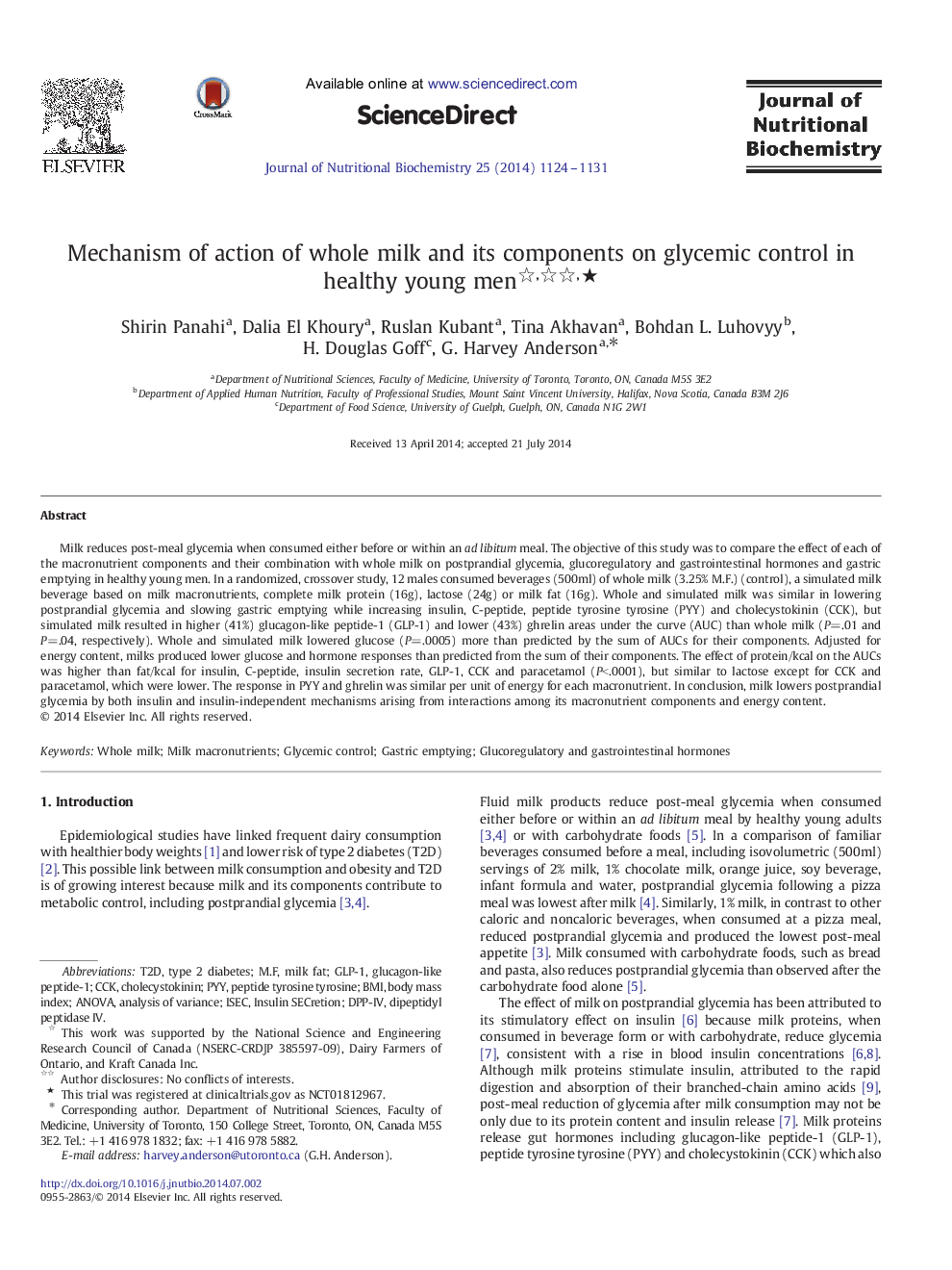| Article ID | Journal | Published Year | Pages | File Type |
|---|---|---|---|---|
| 8337049 | The Journal of Nutritional Biochemistry | 2014 | 8 Pages |
Abstract
Milk reduces post-meal glycemia when consumed either before or within an ad libitum meal. The objective of this study was to compare the effect of each of the macronutrient components and their combination with whole milk on postprandial glycemia, glucoregulatory and gastrointestinal hormones and gastric emptying in healthy young men. In a randomized, crossover study, 12 males consumed beverages (500ml) of whole milk (3.25% M.F.) (control), a simulated milk beverage based on milk macronutrients, complete milk protein (16g), lactose (24g) or milk fat (16g). Whole and simulated milk was similar in lowering postprandial glycemia and slowing gastric emptying while increasing insulin, C-peptide, peptide tyrosine tyrosine (PYY) and cholecystokinin (CCK), but simulated milk resulted in higher (41%) glucagon-like peptide-1 (GLP-1) and lower (43%) ghrelin areas under the curve (AUC) than whole milk (P=.01 and P=.04, respectively). Whole and simulated milk lowered glucose (P=.0005) more than predicted by the sum of AUCs for their components. Adjusted for energy content, milks produced lower glucose and hormone responses than predicted from the sum of their components. The effect of protein/kcal on the AUCs was higher than fat/kcal for insulin, C-peptide, insulin secretion rate, GLP-1, CCK and paracetamol (P<.0001), but similar to lactose except for CCK and paracetamol, which were lower. The response in PYY and ghrelin was similar per unit of energy for each macronutrient. In conclusion, milk lowers postprandial glycemia by both insulin and insulin-independent mechanisms arising from interactions among its macronutrient components and energy content.
Keywords
Related Topics
Life Sciences
Biochemistry, Genetics and Molecular Biology
Biochemistry
Authors
Shirin Panahi, Dalia El Khoury, Ruslan Kubant, Tina Akhavan, Bohdan L. Luhovyy, H. Douglas Goff, G. Harvey Anderson,
